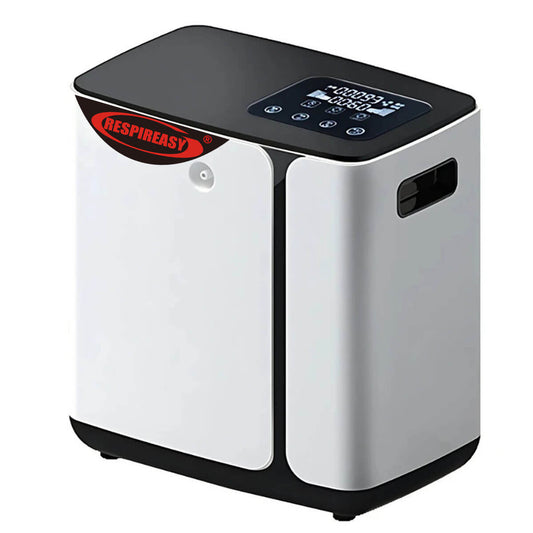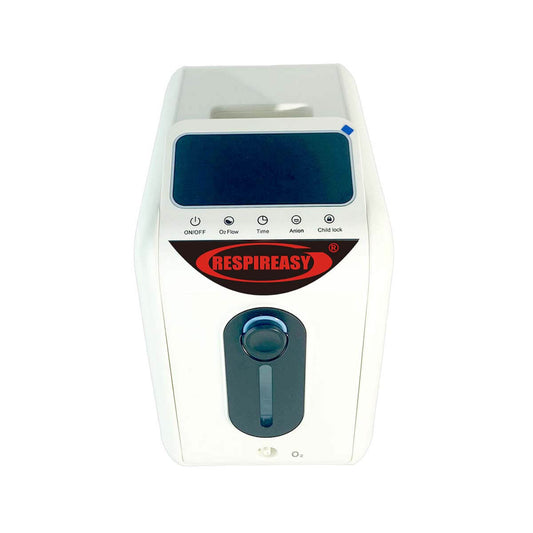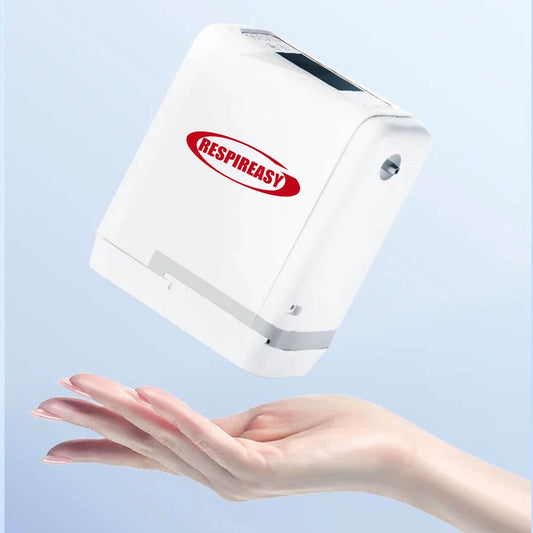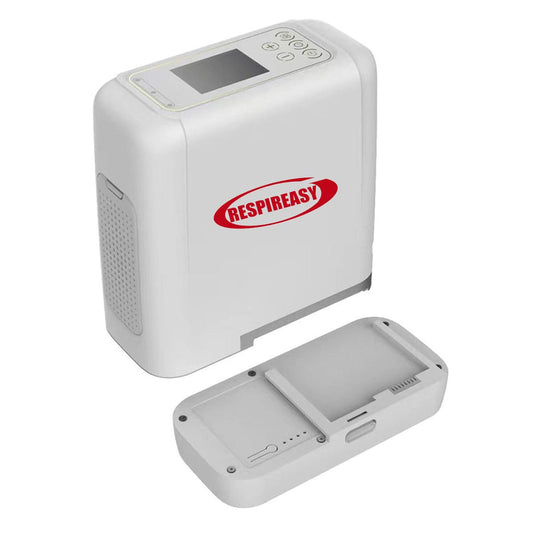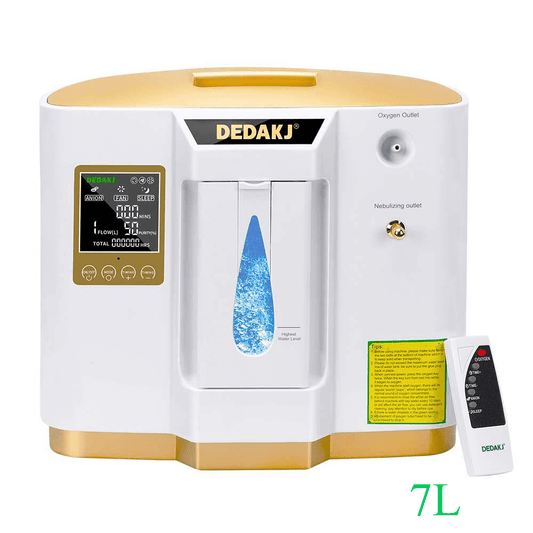The Working Principle Of The Home Oxygen Generator And The Common Faults And Troubleshooting Methods Of The Oxygen Generator
The working principle of the home oxygen generator (how does the oxygen generator produce oxygen? )
The principle of the oxygen machine is to use the air separation technology, first compress the air with high density and then use the difference in the condensation point of each component in the air to separate the gas and liquid at a certain temperature, and then further distill it. The working principle of the household oxygen generator: using molecular sieve physical adsorption and desorption technology. The oxygen generator is filled with molecular sieves, which can absorb nitrogen in the air when pressurized, and the remaining unabsorbed oxygen is collected and purified. Become high-purity oxygen. The molecular sieve discharges the adsorbed nitrogen back into the ambient air during decompression, and can absorb nitrogen and produce oxygen during the next pressurization. The whole process is a periodic dynamic cycle process, and the molecular sieve does not consume.

Oxygen concentrators are suitable for people with oxygen therapy and oxygen care
Household oxygen concentrators can help families with bronchial asthma, chronic bronchitis, emphysema, angina pectoris, respiratory and heart failure and other diseases, significantly improve the blood oxygen saturation of patients, and reduce the pain of patients. However, not only patients with the above diseases will need oxygen concentrators due to hypoxia.
- Mental workers: students, company employees, government officials...the brain is in a state of high tension for a long time, which may easily cause brain hypoxia, dizziness, chest tightness, slow response and other symptoms. At this time, oxygen inhalation can play a good role in helping the body recover.
- Pregnant women: Regular oxygen inhalation by pregnant women can increase the oxygen content of arterial blood, which is conducive to improving the functional status of pregnant women and allowing better growth and development of the fetus.
- Snoring: Severe snoring is also called sleep apnea syndrome. Some people with severe snoring will experience hypoxia during snoring, such as purple complexion and purple lips. If you use a home oxygen generator while sleeping, you can Effectively relieve these symptoms.
- Elderly people: If there are elderly people at home, it is necessary to prepare a household oxygen generator. Proper oxygen inhalation can effectively reduce and reduce the occurrence of cardiovascular and cerebrovascular diseases in the elderly.
- Oxygen supplementation for exercise: After daily exercise, there may be transient hypoxia, causing symptoms such as asthma, dizziness, and nausea. Oxygen inhalation can speed up the relief of discomfort and help the body recover.
In summary, generally all groups of people can use home oxygen concentrators. Household oxygen concentrators are already very common home recuperation equipment, and oxygen inhalation health care has been popular in many European and American countries for a long time.

Click and Check more DEDAKJ Portable Oxygen Concentrator:
Portable Home oxygen concentrator:
https://dedakjoxygenconcentrators.com/collections/home-use-oxygen-concentrator
Mini and Small oxygen concentrator:
10 Liter medical oxygen concentrator:
https://dedakjoxygenconcentrators.com/collections/medical-5l-10l-oxygen-concentrator
Common faults and troubleshooting methods of oxygen generators
As an important family health care product, the oxygen generator can achieve the purpose of treating diseases, relieving symptoms, promoting recovery, preventing disease, and improving health. When using a household oxygen generator, it is inevitable that there will be various faults. Today, I will summarize some common faults and troubleshooting methods of the oxygen generator.
Frequently asked questions about oxygen generators:
- Why does the oxygen generator make strange noises?
Because the compressor of the oxygen machine is an oil-free compressor, the machine will make a regular sound of blowing out nitrogen, which is a normal working sound and can be used with peace of mind.
- Why does the oxygen generator generate heat?
Because there is a compressor running inside the machine, it will generate heat. The compressor has a built-in fan to dissipate heat, and the heat will be discharged from the bottom of the machine. It is enough to keep the ventilation at the bottom from being blocked, and the machine has an overheating protection function, so there is no need to worry about overheating.
- Why should water be added to the humidification cup, and what kind of water should be added?
Adding water to the humidification cup is oxygen-humid, and it is more comfortable to inhale. If the oxygen is too dry, it will cause damage to the nasal mucosa. Generally, if you add water, pure water and distilled water are the best. If you don’t have it, you can use cold boiled water or mineral water. Tap water has bacteria, so it is not recommended to use it.
- How to inhale oxygen? Oxygen time?
For the general oxygen health care population, the oxygen inhalation time is half an hour in the morning and evening, and the oxygen flow rate is controlled between 1.5-2.5L/min. Students and white-collar workers can turn on the oxygen generator during study and work, the flow rate is controlled between 2L-2.5L, and the time can be adjusted freely according to the time of study and work. In addition to inhaling oxygen in the hospital, pregnant women can also inhale oxygen at home through a nasal tube. The oxygen flow rate is controlled at 1-2L/min, twice a day, half an hour each time.
Patients with chronic obstructive pulmonary disease need to inhale oxygen at low flow for a long time, and the oxygen flow should be controlled between 1.5-2L/min, preferably more than 10 hours. The daily oxygen inhalation time for cardiovascular and cerebrovascular patients is 1-2 hours each morning and evening, and the oxygen flow rate is 2.5-3L/min. When a coronary heart disease attack occurs, you can choose a flow rate of 2-3L/min to continuously inhale oxygen for 10-30 minutes, then reduce the flow rate to 1-2 liters, and then decide the time for continuous oxygen inhalation according to the relief of symptoms; keep in mind the symptoms After remission, inhale at 1-1.5L/min for another 20-30 minutes to consolidate.
- The machine has been on for a long time, then suddenly stops, and the switch does not work again, but the power indicator light is on and an alarm is given.
It is very likely that the compressor has been working for too long, causing the compressor to overheat, causing the compressor to turn on the overheat protection and automatically shut down. Therefore, try to avoid the machine working continuously for a long time without stopping. It is best to run for 12 hours and stop for 30 minutes.
- It is obvious that the air volume is small when using it.
The cause is most likely a leak in the humidification bottle. The following exclusions can be taken:
Turn on the power switch of the machine and adjust the flow meter to the position of 3 liters. Block the oxygen outlet of the humidification bottle by hand, the float of the flow meter should move downwards, and at the same time the humidification bottle will make a chirping sound (the safety valve is opened), otherwise, the humidification bottle will leak. Tighten the bottle, or replace the humidification bottle.
- The machine is running, but there is no oxygen output, the black bead of the flowmeter is at the bottom or a certain position, and the adjustment knob of the flowmeter does not move.
Reasons may be:
- The humidification bottle core is blocked by scale and is not ventilated.
- Flowmeter knob is closed or damaged.
- The flow meter is not adjusted correctly
Method of exclusion:
1) Turn on the power switch of the machine to make the machine run. Unscrew the humidification bottle and see if the black float of the flow meter is adjustable. If it is adjustable, the humidification bottle core is blocked by scale. Use a needle to open the humidification bottle core hole. Otherwise check the flowmeter knob.
2) Rotate the flowmeter knob counterclockwise to see if the flowmeter knob rod rotates accordingly. If not, the flowmeter is damaged. Contact the manufacturer's maintenance personnel to replace or repair the flowmeter.
3) Correctly adjust the flow meter
- Low oxygen concentration alarm occurs
Reasons may be:
- The molecular sieve is polluted or its lifespan is up (generally about 10,000 hours)
- The PCB board (circuit board) is damaged or unqualified
- The magnetic valve and rotary valve are damaged or unqualified
- Leakage of pipeline or joint
- Bad compressor
Method of exclusion:
- Replace the molecular sieve
- Replace the PCB board 3. Replace the rotary valve
- Check whether the pipeline and joints are leaking
The above are some common problems, faults and troubleshooting methods of oxygen generators, hoping to provide you with some help































